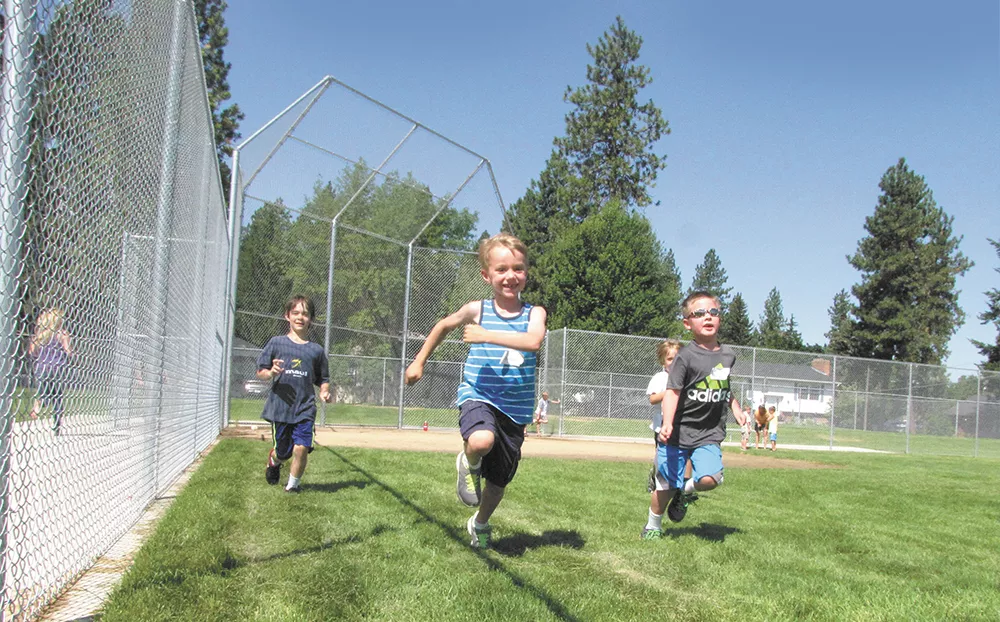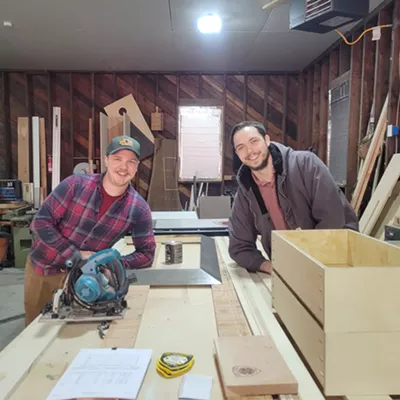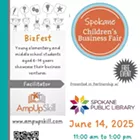
For children, playtime is serious business. It enhances learning and helps shape our brains in ways that have lifelong implications. But some educators are concerned that kindergarten curricula have become too academic in recent years, despite research showing the importance of play in human development.
Now some states, including Washington, are getting back to the basics and training teachers in the importance of this keystone of the kindergarten classroom. In Spokane Public Schools, the concept of play is an integral part of the kindergarten curriculum, says Lorna Spear, the district's director of early learning and intervention.
"Sometimes I think we forget children want to read," Spear says. "They want to be able to engage in books. They want to be able to count things and add. We just need to present it in a way that's engaging and keeps them wanting to learn. It's not about making kids learn to read."
Play With A Purpose
In a June draft of the Washington State Full-Day Kindergarten Guide, the state Office of Superintendent of Public Instruction writes, "Sadly, in recent years, kindergarten has become more about test scores than about child development."
As schools across the country push for better reading and mathematics scores in response to the No Child Left Behind Act, Race to the Top, and the widely adopted Common Core Standards, standardized instruction, worksheets and rote learning have overshadowed playtime in many classrooms, even for kindergartners.
"Research is now beginning to look at the student outcomes associated with the removal of play from early learning environments, and the results are not favorable," the draft reads. "While policies are requiring more testing be done on our young learners, business leaders know that in order to create a generation of problem solvers and critical thinkers, play must be restored to the classrooms."
Research strongly suggests, for example, that working with blocks increases a child's spatial reasoning, leading to higher achievement in geography, science, technology, engineering and mathematics.
But encouraging more play doesn't mean more time for "anything goes." It's purposeful play, Spear says, and it's done with intention.
"They're having a good time, but it's with a framework of learning behind it," she says. "I think there's confusion sometimes. When we're structuring ideas for children, they're active, they're engaged, but there is learning behind it."
In the 2014-15 school year, the district adopted a new curriculum called Lit Fit for all kindergarten classes, which engages children in movement-based learning activities that emphasize math and literacy skills, focusing on firing up the entire brain through movement. A fitness and health teacher teams up with a kindergarten teacher in the gym, and kids go from station to station for different activities that combine literacy and physical activity.
One station might have a ladder, with cards in between rungs that have word and a picture. The children at that station get to jump through each rung and sound out the word on the card before moving on. Teachers often stay at the most difficult stations to assist the children as needed.
"They're doing all this physical activity," Spear says. "Sometimes there's problem solving. They're meeting fitness and health standards, and literacy and numeracy simultaneously, with both experts in the room. It's probably the best thing we've ever done."
Lit Fit isn't the only time that play is incorporated. The 2013 decision to switch to full-day kindergarten gives teachers the chance to work more purposeful play into the classroom throughout the day, which is broken up into full-group activities, small-group stations that the children rotate between and individual writing, reading and math practice.

The morning greeting — a staple in many kindergarten classrooms — is an active, highly engaging, full-group activity that signals the state of the day, says Karin Thompson, elementary curriculum coordinator for Spokane Public Schools. During the morning meeting, children come together to sing songs about the days of the week, for example, or the life cycle of a tree. They introduce themselves, and greet and shake hands with each other, a ritual that helps them learn social skills. Then, they might work on language skills through storytelling, sharing with their peers something they did over the weekend or talking about their favorite book.
In a small group rotation, children might work on literacy through creative play, forming the same letter using a variety of art mediums such as clay or finger paint. "There's actually a lot happening, with them working with that letter in all these different mediums," Thompson says.
And it's not just a constant stream of purposeful play; there's quiet, individual time throughout the day, too.
"It's finding that balance for their class," she says.
Lighting Up The Brain
Play starts with an infant's first social smile, called "attunement play," according to the National Institute of Play, which advocates for more scientific research into the neurobiology of play.
It goes like this: When an infant makes eye contact with its mother, each experiences a spontaneous surge of joy. The baby responds with a radiant smile, the mother with her own smile and baby talk. Researchers know, through electroencephalograms and other imaging technologies, that the right cerebral cortex, which organizes emotional control, is attuned in both infant and mother. Research suggests that the importance of play starts in infancy and pervades our lifespans.
They identify several other types of play: attachment play, body play and movement, object play, social play, imaginative and pretend play, storytelling-narrative play and creative play — all of which play a role in human development.
Dr. Stuart Brown, a pioneer in research on play, said in a 2008 TED Talk that plenty of play in childhood makes for happy, smart adults, and keeping it up can make us smarter at any age. "Nothing lights up the brain like play," he said.
"And it's hugely important in learning and crafting the brain," Brown continued. "So it's not just something you do in your spare time."
Spokane-area pediatric occupational therapist Susie LaBarre says her garage is full of toys. They're the tools she has used during her 16 years of work to help children reach their potential in learning through play.
"It's an unconscious occurrence for these kids," LaBarre says. "They don't even realize they're learning when it's playful. That's what's neat — when learning becomes a result of play."
Children progress through different stages when they play, and each helps the child learn different skills. In the first couple of years, it's sensory-motor play, in which children try to understand their body and the new sensations around them.
Then they move into imaginary play, which helps them understand the social world around them and navigate complex events happening around them. "Fantasy play helps them understand reality," LaBarre says.
Constructural play begets creativity, allowing children to develop motor and cognitive skills through spontaneous creativity.
Game play allows children to develop control, understand rules and navigate social pressure — "the idea that if you're going to break the rules, you're taking away from the enjoyment of the group," LaBarre says.
It helps them learn social skills, problem-solving skills, risk taking and how to deal with frustration, failure and anxiety, and to make sense of them world around them. It's important for the development of confidence and self-esteem, in addition to the development of gross and fine motor skills and cognition, she says. The list goes on. Simply put, learning is enhanced by play.
"The enthusiasm, the energy, is different. The individual comes out," LaBarre says of using play versus rote learning for children. And educators can identify where children are having difficulty more readily than when they're sitting at a desk.
Scientists have also shown a neurobiological connection between vestibular input — achieved through movement — and language skills. Vestibular and language pathways are located near one another and both begin to be processed in the receptors of the ear, LaBarre says. "We see language improve when children are involved in sensory-rich activities that allow the body to move, especially when movement involves changes in the child's head position like rolling, somersaults, jumping and crawling through tunnels. A child's speech can improve during vestibular activities."
LaBarre hopes that play will serve as a classroom cornerstone for educators and policy makers. "I think teachers are really having a hard time. [They're] feeling like they're not doing their job if it's not in the standardized instruction," LaBarre says. "I think there's hopefully going to be a pendulum shift saying 'OK, we can still meet these criteria and still incorporate play,' but I think it's going to take a while to get to that point." ♦














